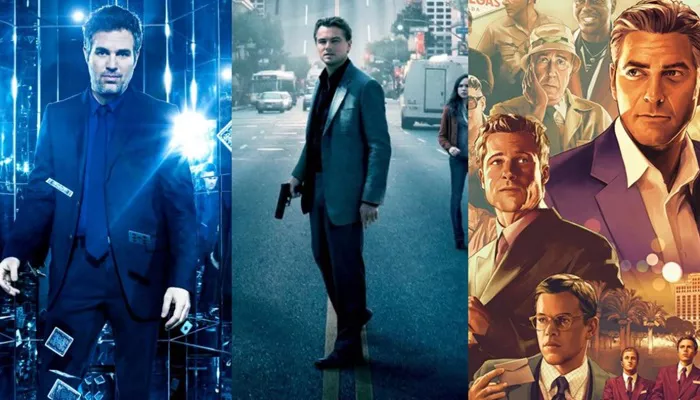Heist films are a unique movie genre that blends suspense, strategy, and storytelling. These films typically follow a group of criminals who plan and execute a theft, often with complex twists and turns. Unlike simple crime dramas, heist films focus on the preparation, the job, and the inevitable aftermath.
This genre has evolved across decades, often reflecting the anxieties and ambitions of the societies they depict. Heist films can be serious, comedic, or somewhere in between, but they all revolve around one central idea: the big score.
The Essential Elements of a Heist Film
A typical heist film includes several key elements: a team of specialists, an elaborate plan, unexpected obstacles, and a high-stakes payout. The protagonist may be a mastermind or an underdog trying to pull off one last job. These elements keep audiences engaged, eager to see whether the characters succeed or fall apart.
Many of these films also explore loyalty, betrayal, and the thin line between right and wrong. Whether set in a high-tech vault or a dusty Western train, the genre remains consistent in theme and structure.
Historical Evolution of Heist Films
The roots of the heist film trace back to classic cinema. Films like “Rififi” (1955) and “The Asphalt Jungle” (1950) laid the foundation. These movies introduced the idea of meticulously planned crimes where every detail mattered. Over time, heist films adapted to cultural shifts, incorporating modern technology, global locations, and diverse casts.
By the 2000s, the genre had become more stylish and commercial. Franchises like “Ocean’s Eleven” and “Fast & Furious” added glamour and action to the traditional formula. Streaming platforms today continue to push the genre forward with fresh perspectives.
Famous Heist Films Across Decades
Many heist films have left a lasting mark on audiences and the film industry. Some of the most iconic include:
- “Heat” (1995) – Known for its intense realism and the face-off between Al Pacino and Robert De Niro.
- “Ocean’s Eleven” (2001) – A slick, modern remake filled with charm, cleverness, and celebrity power.
- “The Town” (2010) – A gritty Boston-based thriller that blends action with emotional depth.
- “Inside Man” (2006) – A cerebral take on the genre with a brilliant twist ending.
- “Baby Driver” (2017) – A musical, high-octane spin on the getaway driver sub-genre.
Each of these films represents different stylistic choices but remains true to the genre’s roots in suspense and strategy.
Notable Heist Film Characters
Memorable characters drive the success of a great heist film. The genre has introduced some of the most complex and charismatic roles in cinema. From Danny Ocean’s suave confidence to Neil McCauley’s quiet precision, these roles captivate viewers.
Many of these movie characters are antiheroes—morally gray individuals with justifiable motives. This ambiguity adds depth and keeps the audience emotionally invested.
The Appeal of Heist Films
What makes heist films so compelling? It’s the blend of action, intellect, and unpredictability. The audience is often drawn into the strategy, feeling almost complicit in the crime. These films deliver a rush—whether the job succeeds or spectacularly fails.
Heist films also speak to broader themes: rebellion against authority, survival in an unjust world, and the seductive lure of easy wealth. These timeless ideas ensure the genre’s enduring popularity.
Subgenres and Variations
While traditional heist films focus on banks or casinos, variations have emerged. Some include:
- Comedy Heists – Films like “Logan Lucky” use humor to subvert genre expectations.
- Romantic Heists – Movies where love and larceny intertwine, such as “The Thomas Crown Affair.”
- Sci-Fi Heists – “Inception” is a prime example, replacing vaults with dreams.
- International Heists – Global perspectives, such as the Spanish series “Money Heist,” have broadened the genre’s appeal.
These variations show the genre’s flexibility and ability to adapt to different tones and cultures.
The Role of Technology in Modern Heist Films
Today’s heist films often feature cutting-edge technology. From digital surveillance to hacking tools, the genre has kept pace with real-world advancements. This shift has allowed filmmakers to create more sophisticated and believable scenarios.
Technology not only enhances the plot but also adds visual excitement. Films like “Now You See Me” blend illusions, tech, and trickery in a way that keeps viewers guessing.
Heist Films and Cultural Commentary
Many heist films serve as reflections of societal concerns. They comment on income inequality, corruption, or political disillusionment. Characters often rob from the rich or powerful, appealing to the audience’s sense of justice or rebellion.
For example, “Money Heist” taps into themes of economic oppression, while “The Italian Job” portrays revenge against corporate betrayal. These narratives offer more than thrills—they provoke thought.
Critical Reception and Movie Reviews
Heist films often receive diverse movie reviews. Critics may praise the tight pacing, clever twists, or charismatic performances. Others may point out formulaic plots or implausible details. Still, the best films in this genre tend to balance intelligence with entertainment.
Critics and audiences alike have celebrated heist films for their rewatch value and cultural influence. They’ve become staples of film festivals and mainstream box offices alike.
Impact on the Film Industry
Heist films have significantly influenced the broader film industry. They often inspire directors across genres and are a favorite among screenwriters due to their intricate plotting. The genre has also led to franchise opportunities and crossover into TV formats.
Studios appreciate the commercial viability of heist films. Their mix of suspense, character development, and spectacle attracts global audiences, making them dependable box-office draws.
Conclusion
The heist film remains one of cinema’s most exciting and versatile genres. Whether told with grit, charm, or fantasy, these stories tap into universal emotions: risk, betrayal, loyalty, and the thrill of the impossible.
From early classics to modern blockbusters, heist films continue to evolve while staying true to their roots. As long as audiences crave suspenseful storytelling with moral complexity, this genre will remain a vital part of cinematic history.

